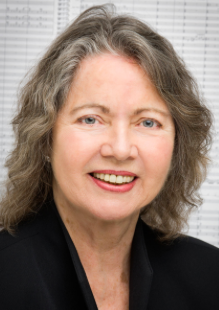|
Symphony
MONUMENTAL MAHLER 5TH IN SO CO PHIL'S SEASON ENDING CONCERT
by Terry McNeill
Sunday, April 14, 2024
Symphony
YOUTH ORCHESTRA CHARMS BIG SPRING LAKE AUDIENCE
by Terry McNeill
Wednesday, February 28, 2024
Symphony
SOLO BRILLIANCE IN SANTA ROSA SYMPHONY CONCERT
by Terry McNeill
Saturday, February 17, 2024
Symphony
HAYDEN'S SAXOPHONE CONCERTO AT SO CO PHIL CONCERT
by Ron Teplitz
Sunday, January 28, 2024
Symphony
SCHUBERT AND MENDELSSOHN BOUQUETS AT COLLEGE OF MARIN CONCERT
by Abby Wasserman
Saturday, December 9, 2023
Symphony
SYMPHONY'S MESSIAH ORATORIO A STUNNING HOLIDAY SUCCESS
by Pamela Hicks Gailey
Sunday, December 3, 2023
Symphony
TWO ORCHESTRAS AND FIVE DISPARATE WORKS IN WEILL HALL
by Ron Teplitz
Sunday, November 19, 2023
Symphony
MARIN SYMPHONY'S CHAMBER ENSEMBLE DAZZLES IN NEW SEASON CONCERT
by Abby Wasserman
Saturday, November 11, 2023
Symphony
TITANIC SRS MAHLER SYMPHONY IN WEILL NOV. 5
by Terry McNeill
Sunday, November 5, 2023
Symphony
PROFOUND SCHUMANN CONCERTO PERFORMANCE BY BRESHEARS AT THE JACKSON
by Terry McNeill
Sunday, October 29, 2023
|
 |
 Composer Ellen Taafe Zwilich |
SANTA ROSA SYMPHONY HITS THE SWEET SPOT
by Steve Osborn
Sunday, February 28, 2021
Small orchestras can inhabit a sweet spot between chamber ensembles and full orchestras, but how well they hit that spot depends on the composer's orchestration and the players' ability to project. That dependence was on full display in the Santa Rosa Symphony's Feb. 28 concert, which featured three pieces for small orchestra and one for string orchestra.
The opener, a 1957 serenade for small orchestra by the African American composer William Grant Still (1895-1978), featured lush sound and a bewitching atmosphere. The melodic material was distinctly American and evoked wide-open spaces, almost like a soundtrack for a Western. Harp and cellos led the way as the orchestra eased into a full-bore expressive melody, punctuated at times by blue notes. Midway through the piece, the sound transitioned to a Native American hue, in the tradition of Dvorak. The world conjured by the piece was beguiling and majestic, with nary a break in the mood. One can only hope to hear more of Still's work in the future.
A different sonic realm unfolded in the next piece, Wagner's "Siegfried Idyll." Here the landscape was an enchanted forest, with occasional birdcalls and a brilliant sunrise. Conductor Francesco Lecce-Chong kept the orchestra at a stately pace with well-controlled dynamics as they floated through Wagner's woods. Two complementary motifs - one of five notes and the other of six - dominate the piece in one form or another from beginning to end. The players did a superb job of handing the motifs from section to section, with seamless transitions and gradual changes of mood.
The strings sustained a rich sound throughout, despite their limited numbers. In one memorable section, a long tremolo in the strings offered a perfect backdrop for a woodwind interlude. The playing showed off a small orchestra at its finest, with clean textures and protean shifts of mood. The tension and release of Wagner's drama was palpable. Lecce-Chong's restrained motions let everyone relax, and the soft ending, with its lovely horn, flute and oboe solos, landed perfectly. A closing shot of a cellist's languid vibrato seemed particularly apt.
Ellen Taafe Zwilich, whose compositions are included in all the Symphony's spring programs, offered an insightful remote video introduction to the next piece, her 1983 "Prologue and Variations for String Orchestra”, which she called a "love song to string instruments." Instead of following a traditional theme-and-variations format, Ms. Zwilich uses a prologue with four distinct musical ideas, each of which receives its own development, or "variation," in the rest of the piece.
The prologue makes extensive use of Shostakovich's musical signature (D, E-flat, C, B) and sounds much like an early Shostakovich string quartet. Indeed, tropes from Shostakovich suffuse the variations, including short bursts of sound, machine-gun chords, sharply etched phrases and repeated riffs. The sound world may be Shostakovich-inspired, but the mood of the piece is much less frantic and despairing than the Russian master's. It was wonderful to hear how the composer’s repeating elements fit together to create forward motion, and the performance was exemplary.
For the closer, Mr. Lecce-Chong selected Dvorak's infrequently played "Czech Suite" for small orchestra. In general, this five-movement suite of dances lacks the heft of Dvorak's symphonies and the intimacy of his chamber music, although it does have memorable melodies in the second and fourth movements.
The performance of the first dance, a pastorale, began promisingly with a strong rhythm driven by the bassoons. The strings then offered a fluid and lilting melody above that background, to lovely effect. The somewhat famous polka followed with a subtle echo effect and a beguiling simplicity, but it didn't sound like a dance. One wished the orchestra could have dug in more to transform the notes into swirling movement.
The subsequent sousedská (minuet) was even more staid and unconvincing. The tempo was too slow, and the musicians didn't seem fully engaged. Fortunately, the following dance, a romance, began with strong flute (Kathleen Lane Reynolds) and English horn solos, and the orchestra ratcheted up a notch. The finale, a fast-paced furiant, was superb. The conductor set a brisk tempo, and he guided the players through Dvorak's dense orchestration with ease. The sound was rich and detailed, despite the fast pace. Near the end, a Baroque-sounding cadence seemed to bring matters to a close, but it was quickly superseded by a vigorous final outburst.
|

